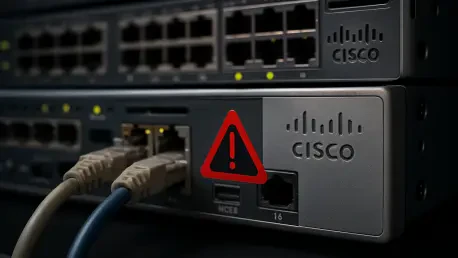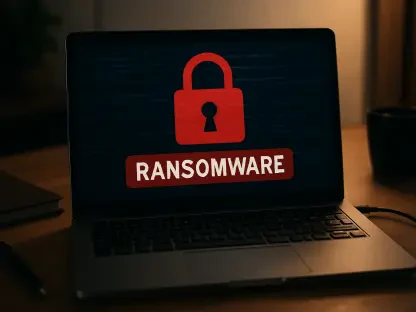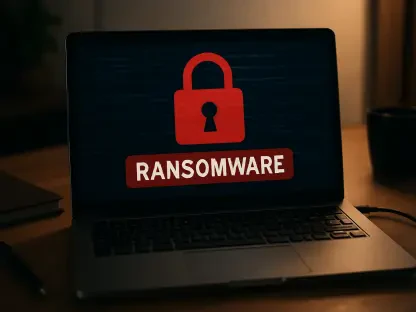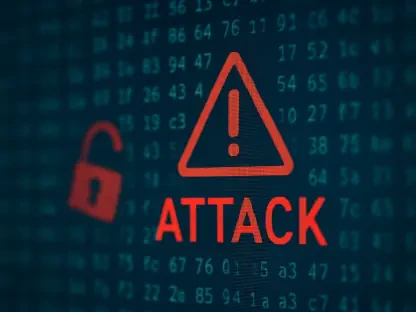Imagine a scenario where the backbone of global telecommunications, educational systems, and manufacturing networks is silently compromised, not by a new, sophisticated cyber weapon, but by a flaw known for years. This is the alarming reality facing Cisco networking equipment, a cornerstone of critical infrastructure worldwide, as state-sponsored actors exploit long-standing vulnerabilities to infiltrate essential systems. The persistent threat to these devices raises urgent questions about the security of foundational technology and the readiness of organizations to defend against escalating cyber espionage.
Assessing the Core Technology: Cisco Networking Equipment
Cisco devices, integral to routing and switching data across vast networks, form the lifeblood of critical sectors like telecommunications and higher education. Renowned for their reliability and scalability, these systems manage the flow of sensitive information for governments, corporations, and institutions globally. However, their widespread adoption also makes them a prime target for adversaries seeking to disrupt or spy on key operations, highlighting the dual-edged nature of dependence on such technology.
The architecture of Cisco IOS and IOS XE software, while robust in design, has revealed critical weaknesses over time, particularly in legacy protocols that remain in use despite known risks. These outdated components, often embedded in end-of-life hardware, lack the encryption and security features necessary to withstand modern cyber threats. This gap between historical design and current threat landscapes underscores a significant challenge in maintaining the integrity of these systems.
Beyond functionality, the sheer scale of Cisco’s deployment—spanning continents and industries—amplifies the potential impact of any security lapse. A single breach in a router or switch can cascade, affecting interconnected networks and exposing vast amounts of data. This interconnectedness, while a strength for efficiency, becomes a liability when vulnerabilities persist unaddressed, placing immense pressure on both Cisco and its users to prioritize security.
Performance Under Threat: Key Vulnerabilities Exposed
CVE-2018-0171: A Persistent Security Flaw
One of the most concerning issues in Cisco’s ecosystem is the vulnerability tracked as CVE-2018-0171, a critical bug affecting IOS and IOS XE software. Identified and patched by Cisco over half a decade ago, this flaw allows remote code execution without authentication, giving attackers a direct path to control affected devices. Despite the availability of a fix, numerous organizations have yet to apply updates, leaving their networks exposed to exploitation.
The consequences of this oversight are severe, as the flaw enables attackers to manipulate device configurations or extract sensitive data. Reports from security researchers indicate that even with patches available, the slow pace of implementation across large-scale systems creates a lingering window of opportunity for cyber adversaries. This delay reflects not just a technical issue but a broader organizational failure to prioritize timely updates.
Exploitation Through Legacy Protocols
Compounding the risk is the reliance on unencrypted, outdated protocols such as Cisco Smart Install (SMI) and Simple Network Management Protocol (SNMP). These protocols, often left enabled by default on older equipment, provide attackers with easy access to configuration files that can be used for further intrusions. The simplicity of exploiting these systems, especially on unsupported hardware, reveals a critical oversight in phasing out obsolete technology.
Security analyses show that adversaries can scan for exposed devices with minimal effort, leveraging these protocols to gain footholds in critical networks. The persistence of such legacy systems, often due to cost or logistical barriers to replacement, creates a predictable entry point for state-sponsored actors and other threat groups. This vulnerability is not just a technical glitch but a systemic issue rooted in resistance to modernization.
Real-World Implications: State-Sponsored Cyber Espionage
A significant dimension of the threat landscape involves state-sponsored actors, notably Russian government entities linked to the FSB’s Center 16, also identified under aliases like Static Tundra and Berserk Bear. These groups have been documented targeting Cisco devices across North America, Asia, Africa, and Europe, focusing on critical infrastructure sectors. Their aim appears to be long-term access for intelligence gathering rather than immediate disruption, a strategy that maximizes strategic value.
The motivations behind these campaigns align with geopolitical interests, where compromised networks can serve as leverage in future conflicts or negotiations. Alerts from federal authorities and Cisco’s own security team, Talos, have emphasized the scale of these intrusions, noting thousands of affected devices. Such widespread targeting illustrates how Cisco’s technology, while powerful, becomes a focal point for nation-state espionage when security lags.
Specific sectors like manufacturing and telecommunications face heightened risks, as breaches can lead to data theft or operational downtime with far-reaching consequences. The ability of attackers to alter configurations for persistent access means that even patched systems may harbor undetected compromises. This persistent threat underscores the need for constant vigilance beyond initial remediation efforts.
Challenges in Securing Cisco’s Ecosystem
Addressing these vulnerabilities is no simple task, as many organizations grapple with systemic neglect in applying patches or retiring end-of-life equipment. The inertia often stems from budget constraints or the complexity of upgrading sprawling networks without disrupting operations. This reluctance creates a fertile ground for exploitation, as adversaries capitalize on known weaknesses that should have been mitigated.
Moreover, the cybersecurity landscape reveals a broader risk, with multiple advanced persistent threats (APTs) and state actors adopting similar tactics to target Cisco devices. The convergence of interest from diverse hostile entities suggests that the problem extends beyond any single adversary, pointing to a universal flaw in how critical technology is managed. This shared focus among threat actors amplifies the urgency of comprehensive security strategies.
Cisco itself faces the challenge of supporting customers in transitioning to secure configurations while continuing to innovate. Although the company has issued guidance and updates, the responsibility ultimately falls on end-users to implement changes, a process often slowed by internal policies or lack of expertise. Bridging this gap between vendor solutions and user action remains a pivotal hurdle in safeguarding these systems.
Verdict on Cisco Device Security
Reflecting on this evaluation, it becomes clear that Cisco networking equipment, while a linchpin of global connectivity, faces significant security challenges due to persistent vulnerabilities and exploitation by sophisticated adversaries. The critical flaw CVE-2018-0171 and the misuse of legacy protocols stand out as glaring weaknesses that have been exploited with alarming frequency, often due to delayed updates or reliance on outdated hardware.
Looking ahead, actionable steps emerge as essential for mitigating these risks. Organizations need to commit to rigorous patch management, prioritize the replacement of end-of-life devices, and adopt modern security protocols to close existing gaps. Collaboration between Cisco, industry stakeholders, and government bodies also appears crucial to developing resilient frameworks that can anticipate and counter evolving cyber threats.
Ultimately, the path forward demands a shift in mindset—from reactive fixes to proactive defense. By investing in continuous monitoring and fostering a culture of security awareness, entities using Cisco technology can better protect critical infrastructure. This review highlights that while the technology itself remains robust, its security depends heavily on the diligence of those who deploy it, urging a renewed focus on safeguarding these vital systems against persistent and growing dangers.









